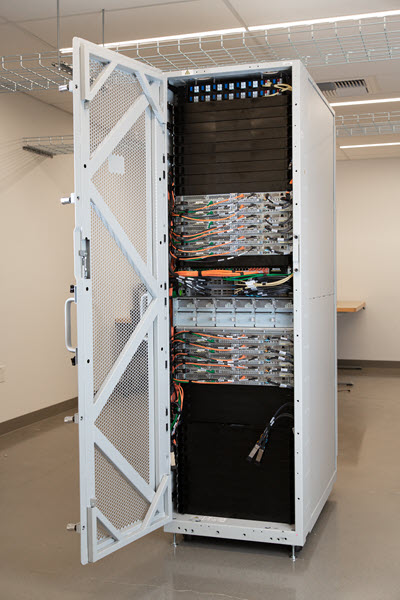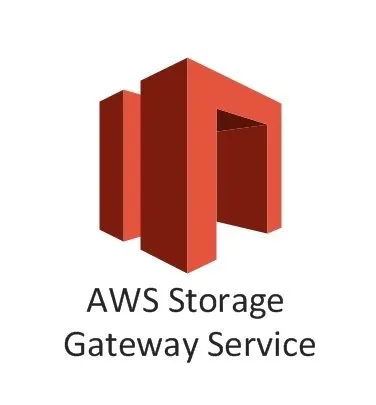Setting up a new infrastructure to host your application has become as simple as clicking a few buttons.
Gone are the days when launching a new business venture required a lengthy, tedious design process to understand the initial capital and cost requirements.
Today, AWS enables you to instantly deploy massive EC2 instances and terabytes worth of Storage and Databases with enticing pay-as-you-use offers, eliminating concerns about long-term provisioning costs.
Consequently, more and more organizations are migrating from traditional on-premise setups to develop and build on AWS.
However, many organizations face complex requirements, such as compliance or geographical location constraints which require an on-premise data center.
AWS recognizes the need of on-premises footprint while still wanting to take advantage of cloud services, and to cater to these organizations, AWS has introduced a range of hybrid solutions and services that enable seamless integration and management of on-premises and cloud infrastructure.

To understand AWS Hybrid model and the need for creating AWS Services that cater to both the cloud and to on-premise organizations, we need to understand the requirements which deem it mandatory to keep some infrastructure on traditional on-premise and hinder the complete migration to AWS or to the cloud.
Data sensitivity and compliance:
Businesses may have strict requirements (whether dictated by business design or mandatory by compliance standards) that make storing their data in a shared cloud environment impossible. There may also be geographical restrictions that mandate that the data be only stored in a specific geographical location backed by hardware security and firewalls.
Such organizations can leverage AWS storage for other storage solutions while keeping the sensitive data on the data center hard drives. AWS Glacier can store long-term archival solutions and less sensitive data. Additionally, AWS Outposts allow customers to run AWS services within their on-premises data centers. This can include services like Amazon S3 on Outposts, which provides object storage with the same S3 APIs within the on-premises environment. This enables customers to maintain data residency and meet compliance requirements while leveraging AWS advantages.

Latency and performance:
Specific applications can have stringent latency requirements that mandate operation from a dedicated geographical data center. AWS can help set up a hybrid environment where the bulk of the processes for the application be carried out from the data center while other workloads with less stringent requirements can be offloaded to AWS.
Legacy systems integration:
Organizations with legacy systems sometimes hesitate to uproot the entire process and migrate it to AWS. Sometimes, there is significant technical debt to process with migration for the older applications. There is also the additional cost of migrating to AWS, whether it is a lift and shift or something more complex such as an app modernization and migration. There can be significant hurdles with moving older, legacy, on-premise applications.
AWS Hybrid can help with creating hybrid networks. AWS provides the ability to set up VPN to connect the on-premise networks to AWS VPCs. Organizations can leverage AWS to develop new applications and take advantage of AWS’s scalability and cost-optimization while continuing to utilize the legacy applications from on-premises.
Disaster recovery and redundancy:
One of the primary reasons why most organizations migrate to AWS is the ease of creating a Disaster recovery process and the inbuild reliability of AWS Architecture. AWS Architecture is built to withstand most geographical or natural disasters using multiple Availability zones and multiple Regions. However, that is not the case with traditional On-premise setups.
Because they are in a single location, any geographical or natural disaster will cause the on-premises servers to go offline, thus causing significant loss to business and revenue.
One way businesses that need to use On-premise setups due to business or compliance requirements can work around that is to create a disaster recovery plan with a cutover to AWS or alternatively to another Data Center with Outposts.
They can design a fully distributed and geo-resilient platform and keep it powered off to save costs. In a disaster, they can turn the Cloud infrastructure on and do a DNS cutover to start serving requests through the cloud architecture.
Container Support for On-prem:
Many organizations want to leverage AWS Services for Container Support. AWS has maintained and established AWS ECS and EKS as flagship container orchestration platforms for Docker and Kubernetes engines. The AWS UI and CLI support provides critical insight and visibility into containerized workloads, which is unavailable for most on-prem infrastructure setups.
To provide support for on-prem organizations, AWS Created AWS ECS Anywhere and AWS EKS Anywhere. AWS provides a simple-to-install agent, which, when installed on an on-prem VM, allows you to use the on-prem data centre/Virtual Machine as a compute resource in your AWS ECS/EKS Cluster. Thus you can use AWS Propriotory containerized services (Such as task definitions, ECS Services, and Container insights), AWS CLI, and AWS UI to manage containers launched, set up, and maintained on your On-premises VMs.
AWS has worked extensively to provide services and cloud options to businesses that unfortunately cannot migrate to AWS completely . AWS Hybrid involves services that provide AWS’s Storage, Compute, Security, and Network solutions to On-premises users in a perfect blend of Cloud and On-prem hybrid setups. Some of the most established services that comprise AWS’s Hybrid cloud are.
AWS Outposts: This service extends AWS infrastructure, services, APIs, and tools to on-premises environments, allowing organizations to run workloads that require low latency or local data processing. It helps maintain data residency and compliance by keeping sensitive data on-premises.

AWS Storage Gateway: AWS Storage Gateway provides a seamless connection between on-premises and AWS storage services. It can be used for hybrid cloud storage, backup, archiving, and disaster recovery, ensuring data consistency and synchronization across environments.
AWS Direct Connect: AWS Direct Connect establishes a dedicated, private network connection between on-premises data centres and AWS, reducing latency and data transfer costs. It is ideal for organizations with high performance or security requirements.

Amazon RDS on VMware: With Amazon RDS on VMware, organizations can deploy fully managed AWS databases in their on-premises VMware environments. This allows them to use familiar AWS management tools while maintaining data on-premises.
AWS VPN: AWS VPN creates secure, private connections between on-premises data centers and AWS, simplifying remote access to AWS resources and maintaining data security during transmission.

AWS Hybrid represents the best of both worlds, bridging the gap between cloud and on-premises environments to offer a seamless, powerful, and flexible infrastructure solution for modern organizations. By combining the scalability, cost-effectiveness, and innovation of the AWS cloud with the control, security, and performance of on-premises systems, businesses can create a tailored hybrid approach that meets their unique needs and requirements. As we’ve explored in this blog, AWS provides a plethora of services and tools designed specifically to support hybrid environments, ensuring smooth integration and unified management. Embracing an AWS Hybrid strategy allows organizations to tackle the challenges of today’s dynamic business landscape head-on, enabling them to stay ahead of the curve and drive success in an increasingly competitive world.







